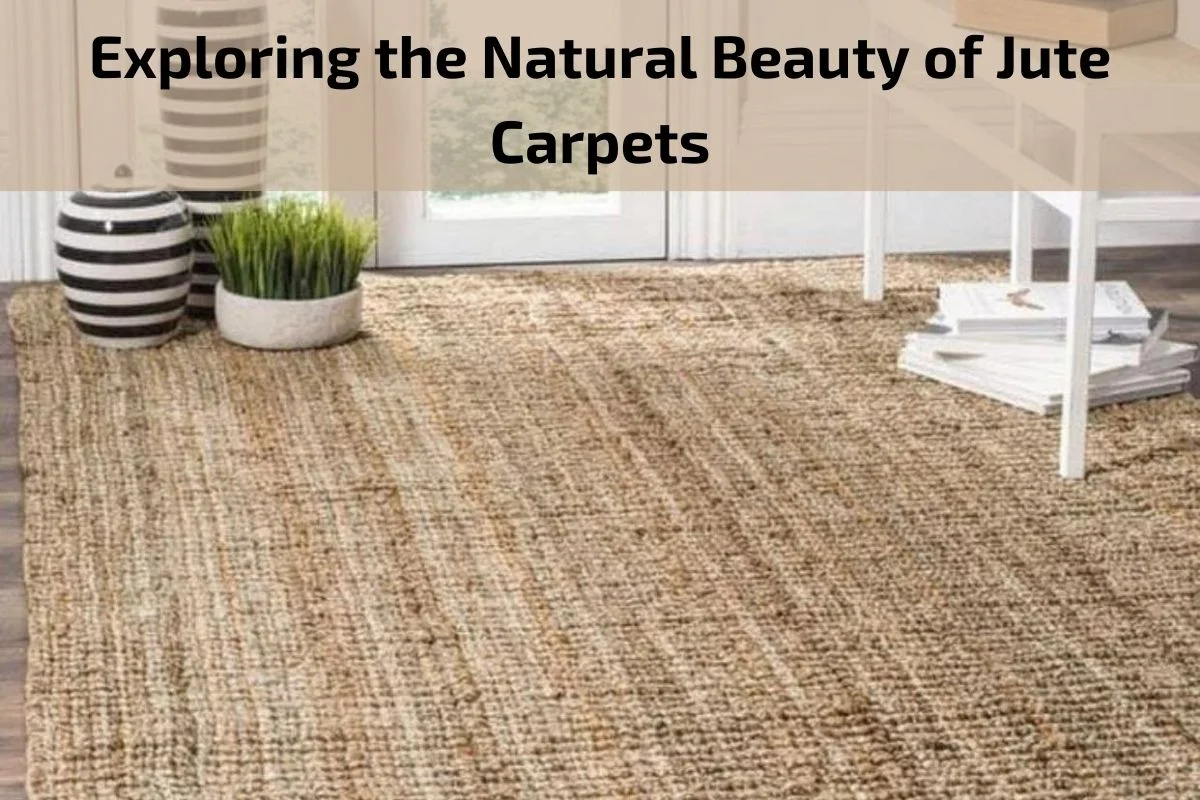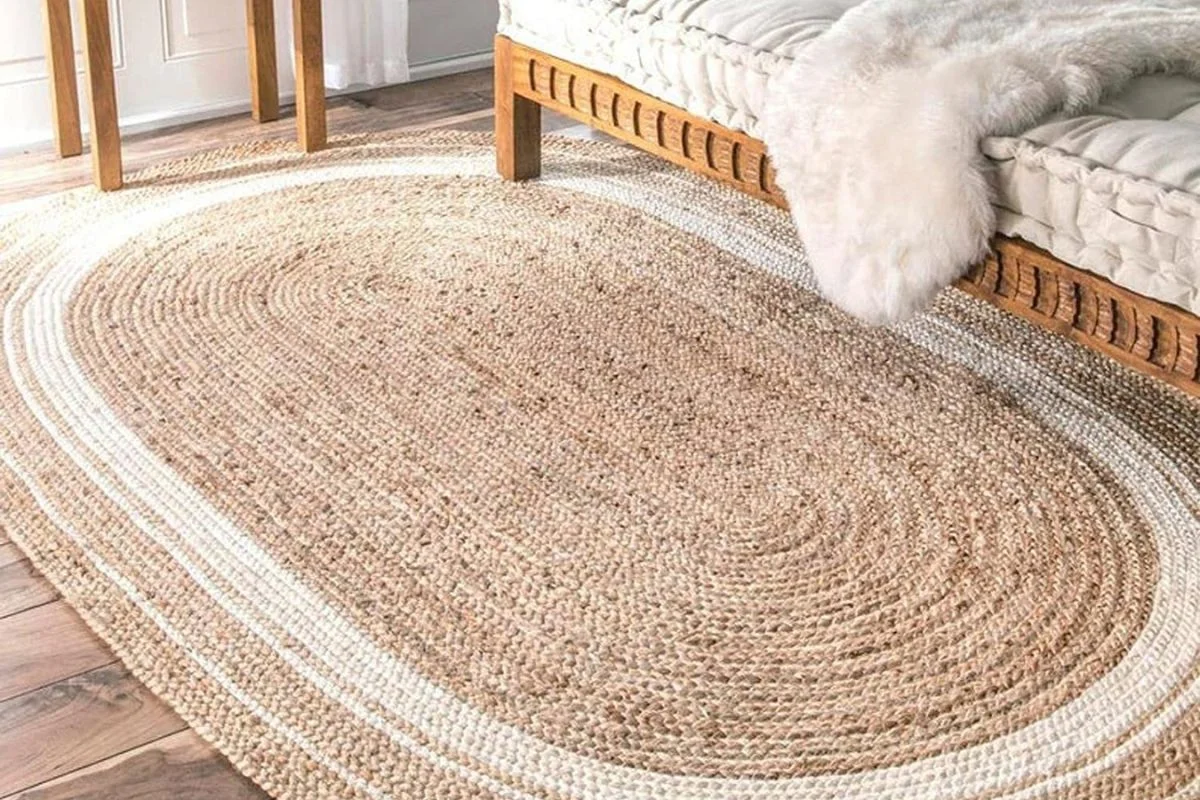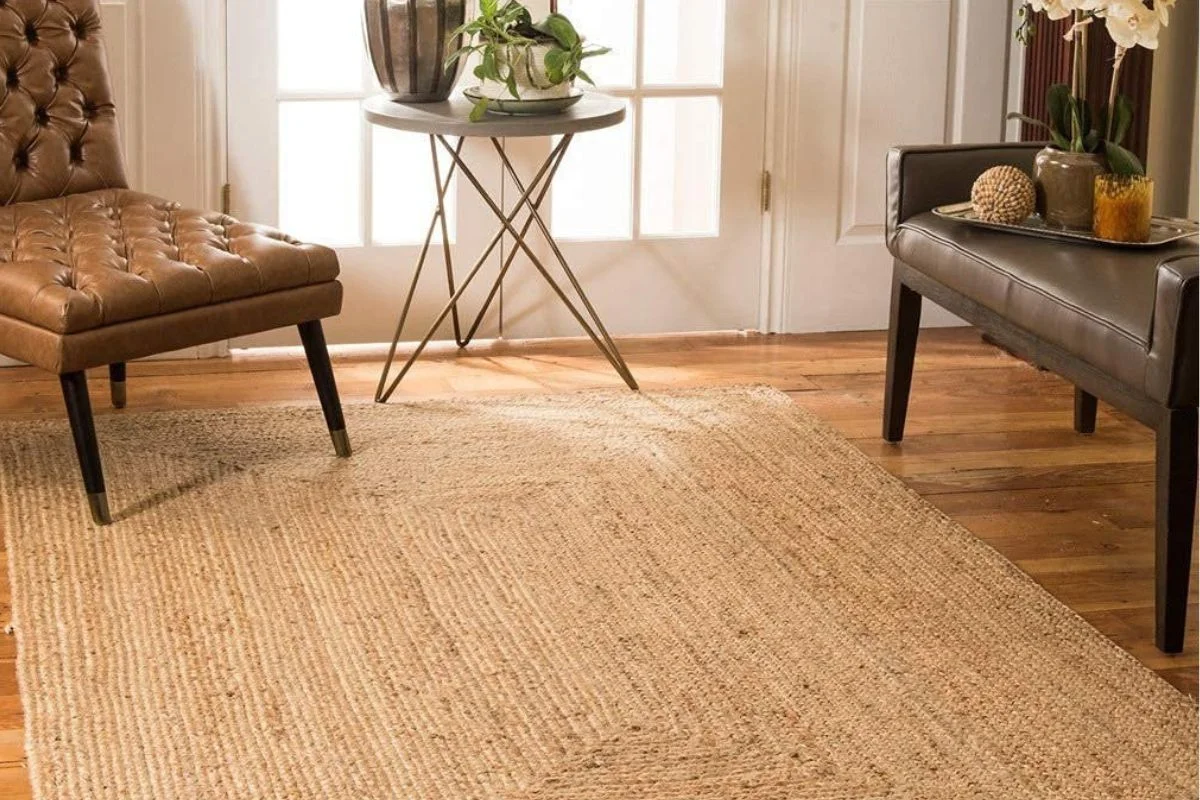Jute carpets embody the rustic charm and natural elegance that have captivated interior designers and homeowners alike. These carpets, woven from the fibers of the jute plant, offer a unique blend of sustainability, durability, and aesthetic appeal that sets them apart in the world of floor coverings.
As we embark on a journey to explore the natural beauty of jute carpets, we delve into the rich textures, earthy tones, and eco-friendly qualities that make them a preferred choice for environmentally-conscious individuals and design enthusiasts.
Join us as we unravel the allure of jute carpets, discovering the timeless allure of natural fibers woven into exquisite floor coverings that bring warmth, character, and a touch of nature into any space.
What are Jute Carpets?
Jute carpets are floor coverings woven from the fibers of the jute plant, a natural and sustainable material known for its strength and versatility. Jute is a long, soft, and shiny vegetable fiber that is primarily grown in the Indian subcontinent and other regions with tropical climates.
The process of making jute carpets begins with the extraction of jute fibers from the stem of the jute plant. These fibers are then spun into yarns, which are woven or tufted into carpet backing to create the final product. Jute carpets can be woven in various patterns and textures, ranging from tightly woven loops to plush and luxurious piles.
One of the distinguishing features of jute carpets is their natural appearance and texture, which adds warmth and character to any space. The earthy tones and rustic charm of jute fibers complement a wide range of interior styles, from traditional to contemporary.
In addition to their aesthetic appeal, jute carpets are valued for their eco-friendly qualities. Jute is a renewable and biodegradable material, making it a sustainable choice for environmentally-conscious consumers. The cultivation of jute requires minimal water and chemical inputs, further reducing its environmental impact compared to synthetic alternatives.
Jute carpets are prized for their durability and resilience, making them suitable for high-traffic areas in both residential and commercial settings. They are also relatively easy to maintain, requiring regular vacuuming and occasional spot cleaning to keep them looking fresh and attractive.
Overall, jute carpets offer a natural and sustainable flooring option that combines beauty, durability, and environmental responsibility. Whether used in homes, offices, or public spaces, jute carpets provide warmth, comfort, and style while promoting a greener way of living.
Brief overview of Jute Carpet
A brief overview of jute carpet reveals a natural and eco-friendly flooring option that embodies rustic charm and sustainable elegance. Jute carpets are crafted from the fibers of the jute plant, a renewable resource known for its strength and versatility.
These carpets boast a distinctive texture and appearance, characterized by earthy tones and a rich, organic feel. They are available in a variety of weaves, from tightly woven loops to plush piles, offering diverse options to suit different interior styles and preferences.
One of the key advantages of jute carpets lies in their sustainability. Jute is a biodegradable material that requires minimal water and chemical inputs during cultivation, making it an environmentally responsible choice for flooring. The cultivation of jute also supports local economies in regions where it is grown, contributing to sustainable livelihoods.
In addition to their eco-friendly qualities, jute carpets are prized for their durability and resilience. They can withstand heavy foot traffic and daily wear and tear, making them suitable for both residential and commercial spaces. With proper care and maintenance, jute carpets can retain their beauty and functionality for years to come.
Overall, jute carpets offer a blend of natural beauty, sustainability, and durability that makes them a popular choice among homeowners, designers, and environmentally-conscious consumers. Whether used in living rooms, bedrooms, or office spaces, jute carpets add warmth, texture, and character to any interior environment, while promoting a greener lifestyle.
Advantages and Disadvantages of Jute Carpets
Advantages of Jute Carpets:
Sustainability: Jute carpets are made from natural jute fibers, which are renewable and biodegradable, making them an eco-friendly flooring option.
Aesthetic Appeal: Jute carpets have a distinct natural texture and appearance that adds warmth and character to any space, enhancing the overall aesthetics of the room.
Versatility: Jute carpets come in various weaves, patterns, and colors, offering versatility in design options to complement different interior styles and preferences.
Durability: Despite being lightweight, jute fibers are surprisingly durable and resistant to wear and tear, making jute carpets suitable for high-traffic areas in homes and offices.
Insulation: Jute fibers have natural insulating properties, providing warmth and comfort underfoot, especially in colder climates.
Cost-Effectiveness: Jute carpets are often more affordable compared to other natural fiber carpets, providing an economical flooring solution for budget-conscious consumers.
Disadvantages of Jute Carpets:
Susceptibility to Moisture: Jute fibers can absorb moisture and are prone to mold and mildew growth if exposed to prolonged dampness or high humidity, making them unsuitable for areas with frequent moisture exposure.
Staining: Jute carpets are more susceptible to staining compared to synthetic carpets, as they do not repel liquids as effectively. Spills should be promptly cleaned to prevent permanent staining.
Abrasion: While durable, jute fibers can be susceptible to abrasion and may wear down over time, especially in high-traffic areas, resulting in loss of texture and appearance.
Sensitivity to Sunlight: Jute fibers may fade or discolor when exposed to prolonged sunlight, leading to changes in color and appearance over time. It is advisable to protect jute carpets from direct sunlight to minimize fading.
Allergies: Some individuals may be sensitive to natural fibers like jute and may experience allergic reactions or irritation upon prolonged exposure, requiring careful consideration for those with sensitivities.
Sustainability and Environmental Impact of Jute Carpets
The sustainability and environmental impact of jute carpets are significant considerations in today’s eco-conscious world. Here’s an overview of how jute carpets contribute to sustainability and their environmental impact:
Renewable Resource: Jute carpets are made from the fibers of the jute plant, a renewable and biodegradable resource. Jute plants grow quickly and require minimal water and pesticides, making them a sustainable alternative to synthetic materials.
Minimal Environmental Footprint: Jute cultivation has a low environmental impact compared to other crops. Jute plants thrive in tropical climates with little need for irrigation or chemical fertilizers. Additionally, jute cultivation helps improve soil fertility and reduces soil erosion, contributing to ecosystem health.
Biodegradability: Jute fibers are fully biodegradable, meaning they can decompose naturally without leaving behind harmful residues or pollutants. At the end of their lifespan, jute carpets can be composted, returning nutrients to the soil and completing the cycle of sustainability.
Carbon Sequestration: Jute plants have the ability to absorb large amounts of carbon dioxide (CO2) from the atmosphere during their growth cycle. As a result, jute cultivation helps mitigate climate change by sequestering carbon and reducing greenhouse gas emissions.
Eco-Friendly Production Processes: The manufacturing of jute carpets typically involves eco-friendly production processes that minimize energy consumption and waste generation. Many jute carpet manufacturers adhere to sustainable practices such as using natural dyes, recycling water, and reducing chemical usage.
Support for Local Communities: Jute cultivation and production provide livelihoods for millions of people in rural communities around the world, particularly in regions where jute is grown. By supporting the jute industry, consumers contribute to sustainable economic development and poverty alleviation.
Reduced Dependency on Synthetic Materials: Choosing jute carpets over synthetic alternatives reduces the demand for petroleum-based products and decreases reliance on finite resources. By opting for natural and sustainable materials like jute, consumers help promote a more sustainable and circular economy.
Installation and Maintenance Tips Jute Carpets
Installation and maintenance play crucial roles in ensuring the longevity and performance of jute carpets. Here are some tips for both installation and maintenance:
Installation Tips:
Subfloor Preparation: Ensure that the subfloor is clean, dry, and level before installing jute carpets. Remove any debris, dust, or adhesive residue that may affect the adhesion of the carpet.
Acclimatization: Allow the jute carpet to acclimate to the room’s temperature and humidity for at least 24 hours before installation. This helps prevent expansion or contraction of the carpet after installation.
Proper Fitting: Measure the room accurately and cut the jute carpet to fit the space properly. Leave a small gap between the carpet and the walls to allow for expansion and contraction.
Use of Underlay: Consider using an underlay or carpet pad beneath the jute carpet to provide cushioning and support. This helps improve the carpet’s comfort and durability and reduces wear and tear.
Professional Installation: For complex installations or large areas, consider hiring a professional carpet installer with experience in working with natural fiber carpets like jute. Professional installation ensures proper fitting and minimizes the risk of installation errors.
Maintenance Tips:
Regular Vacuuming: Vacuum the jute carpet regularly to remove dust, dirt, and debris that can accumulate over time. Use a vacuum cleaner with a brush attachment or a suction-only mode to prevent damage to the delicate jute fibers.
Immediate Spill Cleanup: Attend to spills and stains immediately to prevent them from setting into the carpet fibers. Blot the spill with a clean, dry cloth or paper towel to absorb excess liquid, then gently blot the affected area with a damp cloth and mild detergent.
Avoid Excessive Moisture: Jute carpets are sensitive to moisture and can be damaged by prolonged exposure to water. Avoid using excessive moisture during cleaning and minimize the risk of water spills or leaks on the carpet.
Dry Cleaning: Consider dry cleaning or steam cleaning as an effective method for deep cleaning jute carpets. Avoid using hot water or harsh chemicals, as these can cause the natural fibers to shrink or become distorted.
Rotate Furniture: To prevent uneven wear and indentations, periodically rotate furniture and heavy objects placed on the jute carpet. This helps distribute weight evenly and prolongs the life of the carpet.
Sun Protection: Protect the jute carpet from direct sunlight exposure, as prolonged sunlight exposure can cause fading and discoloration of the natural fibers. Use curtains, blinds, or UV-blocking window films to shield the carpet from sunlight.
Conclusion
In conclusion, jute carpets offer a natural, sustainable, and aesthetically pleasing flooring option for homes and businesses alike. Their renewable nature, minimal environmental impact, and earthy charm make them a popular choice among eco-conscious consumers and design enthusiasts.








